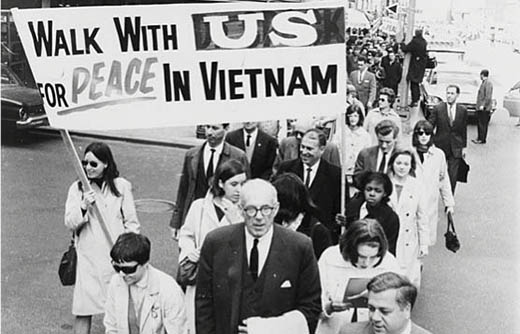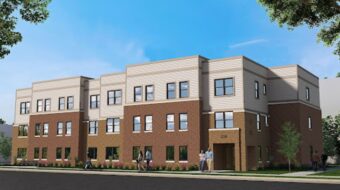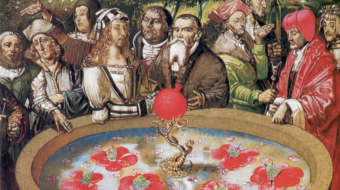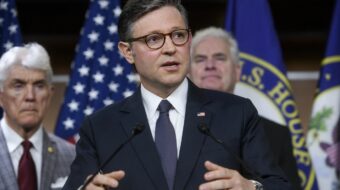
On this date in 1965, the United States capital city of Washington, D.C. saw the first major national demonstration against the war in Vietnam, called by a relatively new organization on the left, Students for a Democratic Society SDS). It attracted an estimated 15-25,000 demonstrators from every part of the country in the largest peace march to date in American history.
Earlier that year President Lyndon B. Johnson escalated the war by massively increasing the number of U.S. troops in Vietnam and intensifying the draft of young men into the service. Especially in the light of the civil rights movement at home, with its pressing urgency for equality, voting rights and social justice, students and young people in general had a difficult time understanding how a neocolonial war in Southeast Asia had much to do with defending democracy.
One SDS project that bore much fruit was the research students conducted into the military-industrial complex connections held by members of university boards of trustees at both public and private institutions. They uncovered a thick web of ties with military suppliers, and also pointed to lucrative government contracts in virtually every university department, showing these places of higher learning to be complicit with the horrifying war crimes and atrocities that started coming to light.
Researchers and journalists also learned about the conflict of interest between government politicians who supported the war and military contractors who both provided jobs in their districts and contributed to their campaigns. Between the civil rights movement and the antiwar movement – which not always overlapped – the moral conscience of the Baby Boomer generation was lit.
Although SDS came out of the democratic socialist movement, it soon became radicalized in the Vietnam Era. Among its hallmarks was a policy of non-exclusion on an ideological basis. At a time when McCarthyism was still very much a factor in American life, SDS reached out to a broad spectrum, including Communists of various stripes.
SDS called for an unqualified end to the war, a position not all peace groups endorsed at the time (some favored more limited demands such as a ceasefire, Stop the Bombing or a negotiated settlement). The growth of SDS chapters around the country spurted exponentially in the months following the April 1965 demonstration. Hardly a university in the country lacked its SDS.
In subsequent years thousands of demonstrations took place to try and end the war, many local ones, including weekly silent vigils, and a number of mass national mobilizations. For years it seemed as though nothing was working to halt the carnage, but slowly the tide turned: The American public finally became convinced this was a war impossible to win, and not worth the social cost. And on the Vietnamese side, the series of corrupt puppet governments the U.S. supported lost all sense of legitimacy. In 1975 the Vietnamese national liberation forces won, a full ten years after that first SDS march.
P.S. I marched in Washington on April 17, 1965 with the SDS contingent from Yale.
Photo: AP, circa 1965











